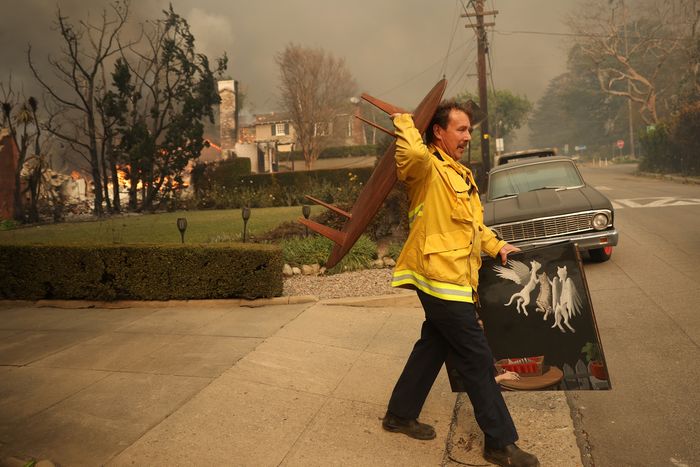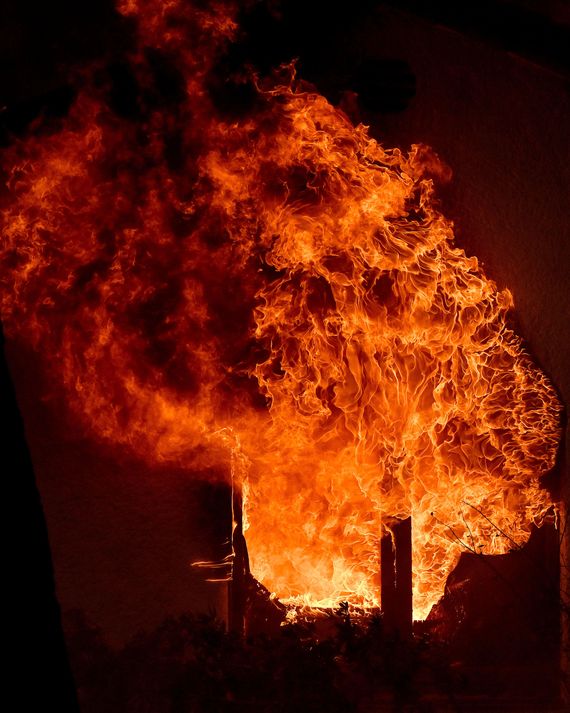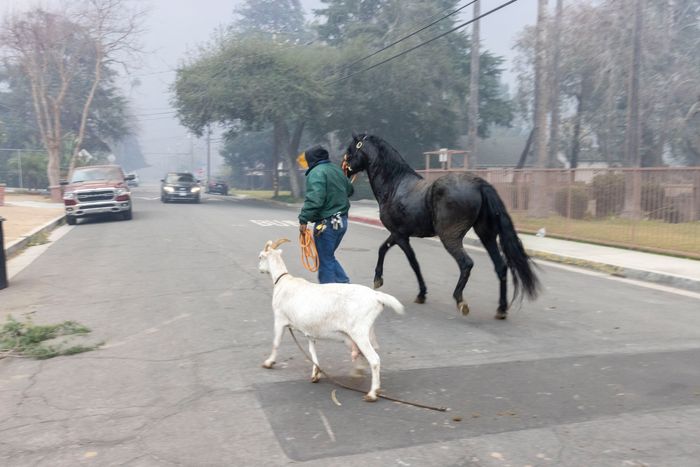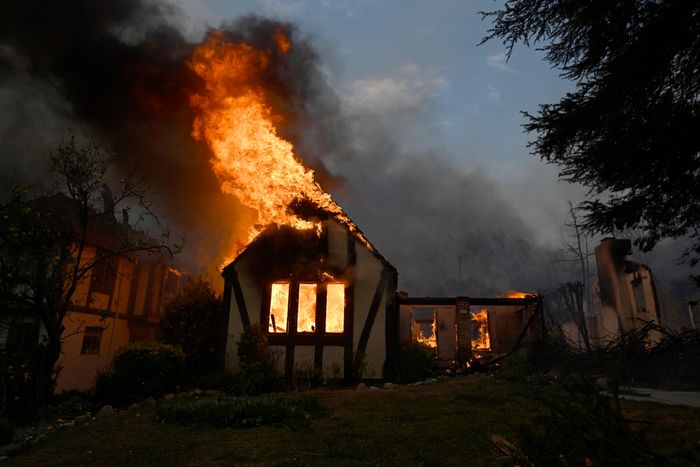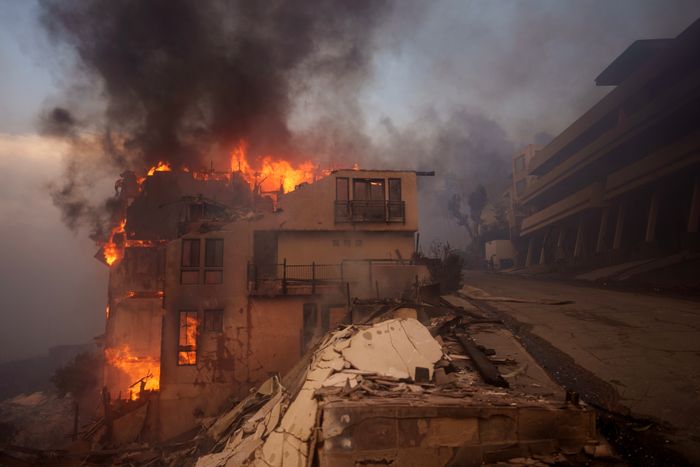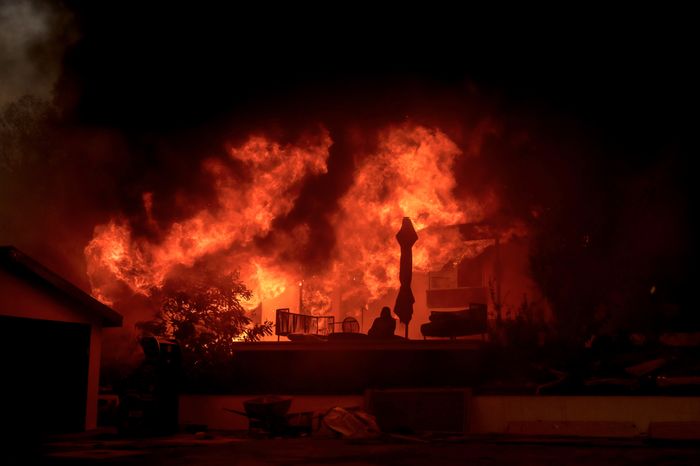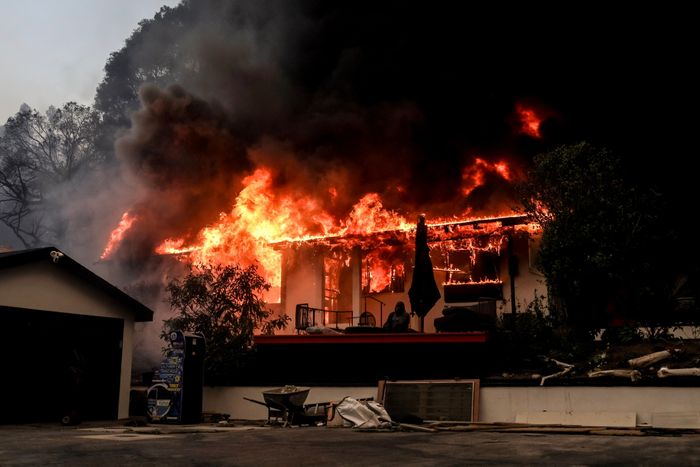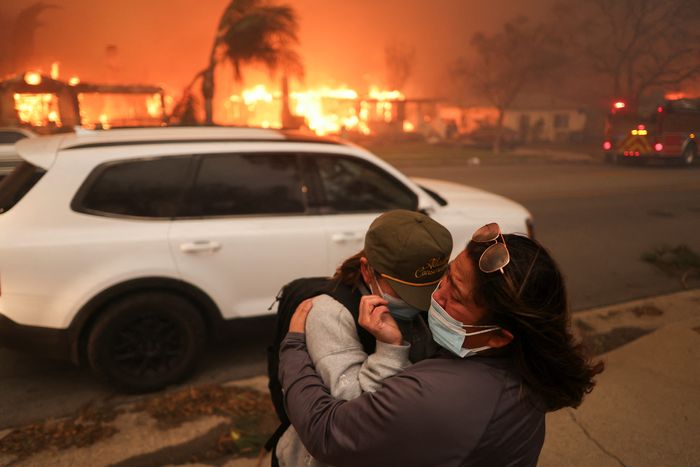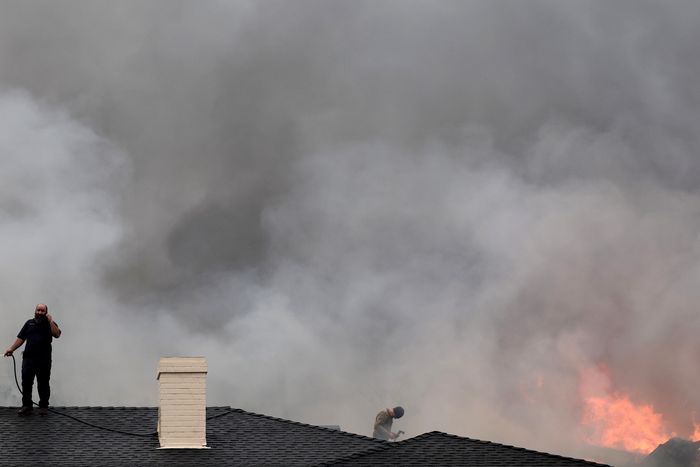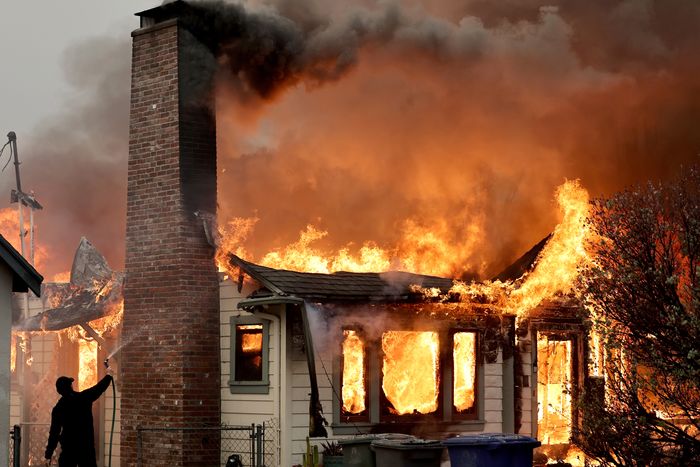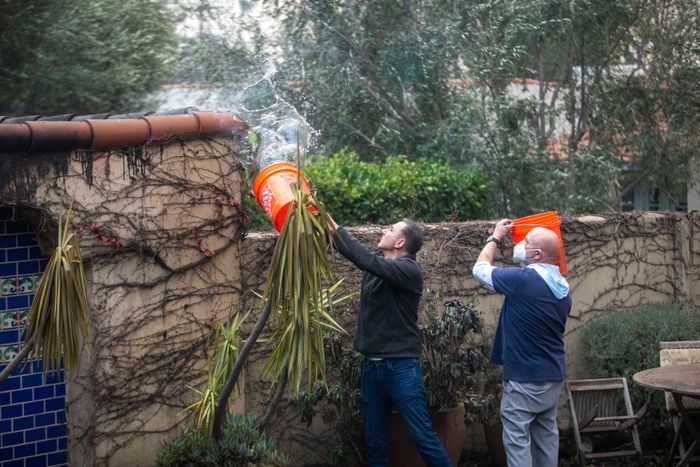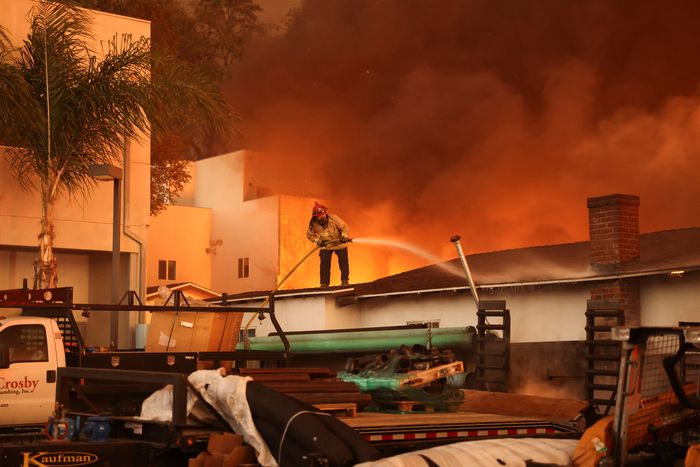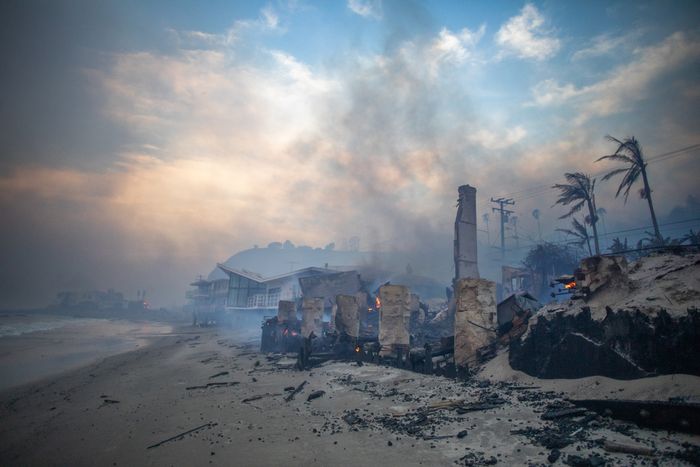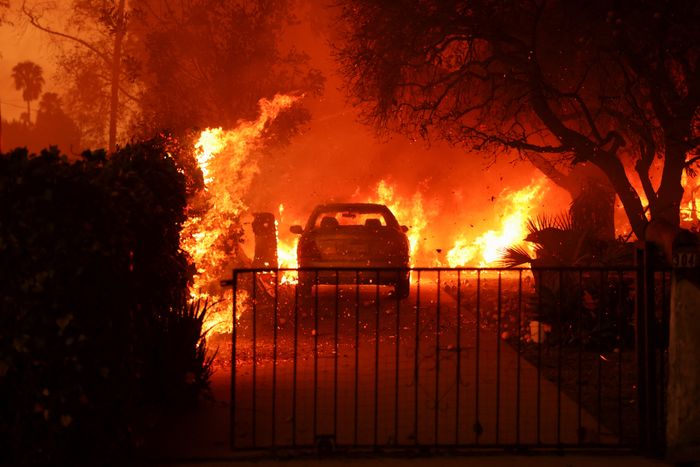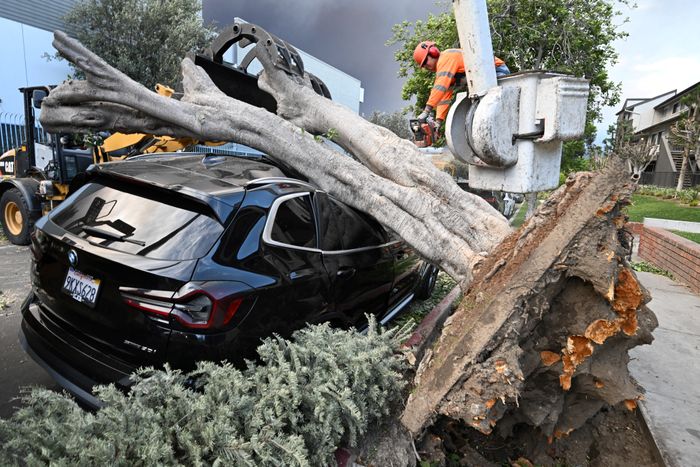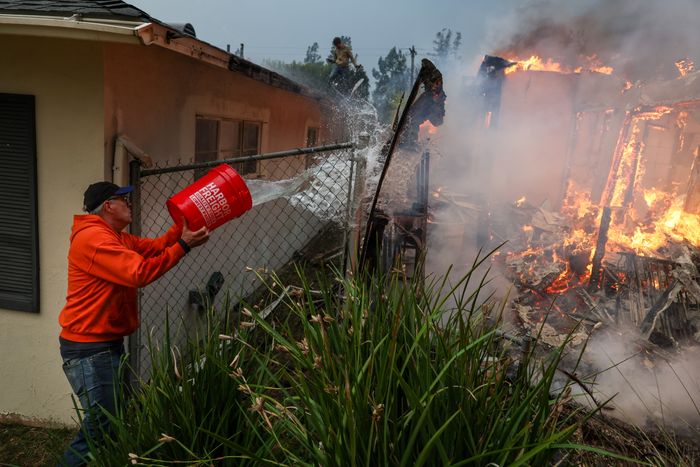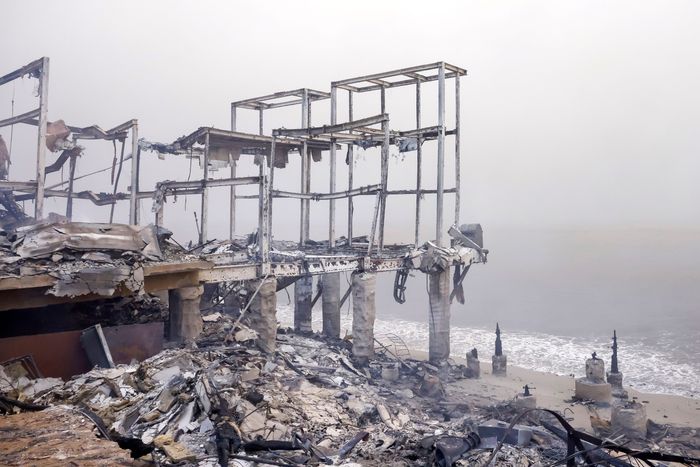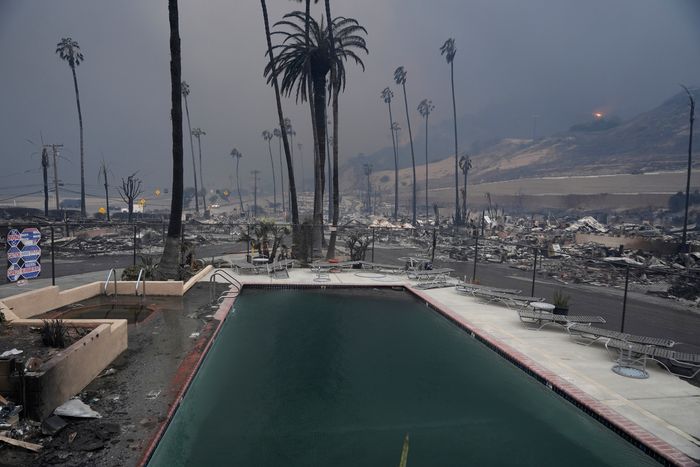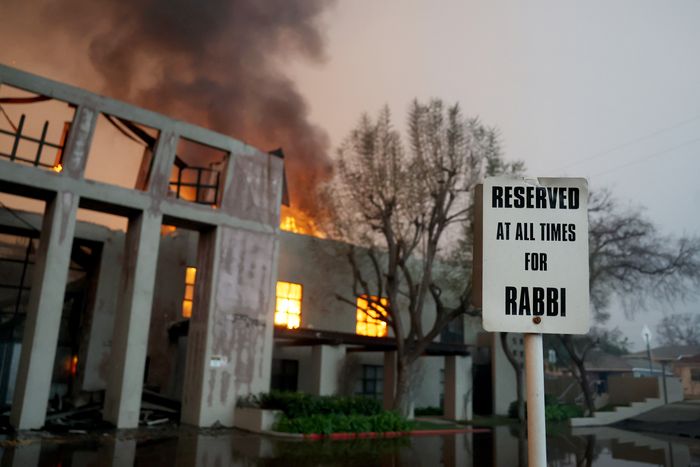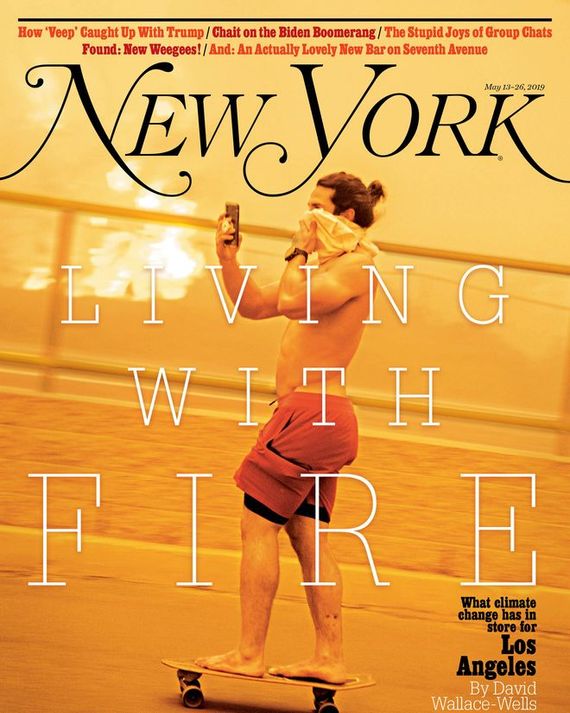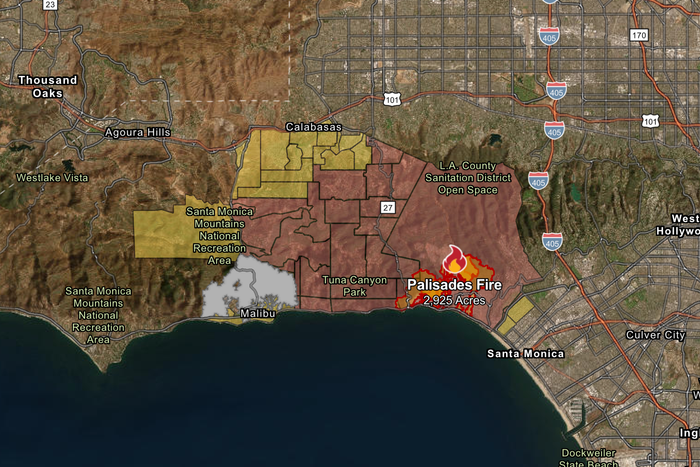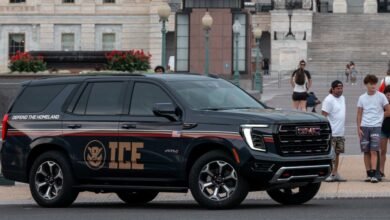
A brush fire that began in the affluent Pacific Palisades neighborhood of Los Angeles on Tuesday quickly exploded into one of the most destructive firestorms in the region’s history, destroying over 1,000 homes and killing at least two people as of Wednesday. Overstretched firefighters are also battling two other blazes, the Eaton and Hurst fires — all fueled by hurricane-force winds. Hundreds of thousands of residents have been forced to evacuate, and California’s governor has declared a state of emergency. Below are scenes of the devastation, growing hour by hour, and live updates.
Photo: Justin Sullivan/Getty Images
Photo: Will Lester/MediaNews Group
Photo: Jill Connelly/Bloomberg via Getty Images
Photo: Will Lester/MediaNews Group/Inland Valley Daily Bulletin via Getty Images
Photo: Eric Thayer/Getty Images
Photo: Allison Dinner/EPA-EFE/Shutterstock
Photo: David Swanson/Reuters
Photo: Mario Tama/Getty Images
Photo: Mario Tama/Getty Images
Photo: Jill Connelly/Bloomberg via Getty Images
Photo: David Swanson/Reuters
Photo: Apu Gomes/Getty Images
Photo: David Swanson/Reuters/REUTERS
Photo: Robyn Beck/AFP via Getty Images
Photo: Robert Gauthier/Los Angeles Times
Photo: Caroline Brehman/EPA-EFE/Shutterstock
Photo: Damian Dovarganes/AP Photo
Photo: Mario Tama/Getty Images
There was so much demand on the hydrant system at the heart of the fire that firefighters on Tuesday night were running out of water coming from hydrants in the Palisades, according to the Los Angeles Times. “Four times the normal demand was seen for 15 hours straight, which lowered our water pressure,” Los Angeles Department of Water and Power chief executive Janisse Quiñones told the paper. The hydrants in the area rely on three tanks with roughly 1 million gallons each. All three had run out by 3 a.m. Wednesday. Quiñones added that additional tanks have been rushed to the area to get the hydrant system operating.
The Los Angeles Times reports that Governor Newsom has cancelled his scheduled trip to Washington, D.C. to attend the funeral of former President Jimmy Carter at the National Cathedral due to the ongoing fires in California. He previously was slated to appear alongside President Biden during his visit to the state on Tuesday, but ultimately called it off as the fires began that day.
CNN reports that Los Angeles Mayor Karen Bass will soon be returning to the city. “The mayor will be on the ground shortly,” Celine Cordero, the mayor’s deputy chief of staff said at a press conference.
Bass had traveled out of the country to attend the inauguration of Ghana’s new president, per a local ABC affiliate.
In 2019, David Wallace-Wells wrote a cover story (“Living With Fire”) warning of the fires to come in Los Angeles based on the fall 2018 fires that surprised many Angelenos.
“No one will ever be honest about this, but firefighters have never stopped a wildfire powered by Santa Ana winds,” the environmental historian Mike Davis told me earlier this spring, as we toured hills ravaged by past fires and — redeveloped and reinhabited in their wake — haunted now by future ones. “All you can hope for is that the wind will change.”
Already, the fires are different. Cal Fire used to plan for wind events that could last as long as four days; now it plans, and enlists, for 14. The infernos bellowed by those winds once reached a maximum temperature of 1,700 degrees Fahrenheit, Cal Fire’s Angie Lottes says; now they reach 2,100 degrees, hot enough to turn the silica in the soil into glass. Fires have always created their own weather systems, but now they’re producing not just firestorms but fire tornadoes, in which the heat can be so intense it can pull steel shipping containers right into the furnace of the blaze. Certain systems now project embers as much as a mile forward, each seeking out more brush, more trees, new eaves on old homes, like pyromaniacal sperm seeking out combustible eggs, which lie everywhere. In at least one instance, a fire has projected lightning storms 21 miles ahead — striking in the right place, these ignite yet more fire. “California is built to burn,” the fire historian Stephen Pyne tells me. “It is built to burn explosively.”
President Joe Biden, who is currently in California, is scheduled to receive a briefing on the ongoing blazes in Santa Monica.
Vice-President Kamala Harris’s California neighborhood was under an evacuation order last night. “No one was in her home at the time. She and the Second Gentleman are praying for the safety of their fellow Californians, the heroic first responders, and Secret Service personnel,” a spokesperson for the vice-president said.
President-elect Donald Trump used the California wildfires as a moment to attack Governor Gavin Newsom, a longtime foe whom he blamed for the ongoing blazes. In a TruthSocial post, Trump said Newsom’s water policies resulted in the dry conditions that allowed the fires to spread.
“A true disaster!” he said.
The Santa Ana winds that caused the firestorm this week are famous for coming in from Southern California and blowing offshore. So far, that means that the smoke from the thousands of burning acres has been pushed away from Los Angeles and over the ocean. But as the Santa Ana winds are expected to die down on Wednesday, models from the National Oceanic and Atmospheric Administration show that smoke is expected to blanket much of metro Los Angeles by early Wednesday afternoon. As of 8 a.m. local time on Wednesday, air-quality sensors throughout much of Los Angeles are reporting air-quality index counts north of 200, the level considered to be “very unhealthy” for all people.
Jay Feinman, an insurance expert at Rutgers Law School, says that the fires in Los Angeles will be the latest front in a long fight between insurers and California homeowners. “A number of larger insurers have actually pulled out of the state or areas of California because it was just too expensive,” Feinman said on Wednesday. “Over the last six months, the state and insurers sat down, and there was a compromise of sorts, in which insurers will have to continue to insure some large number of homeowners who are at risk, but in exchange, the state regulators will permit them to use more sophisticated models than they have in the past to predict their losses. So, people will be able to get insurance, but premiums become much more expensive because the losses are just that much higher.”
As of Wednesday morning, the Southern California wildfires span more than 5,000 acres across the region. Per the California Department of Forestry and Fire Protection, the Palisades fire has burned 2,925 acres while the Eaton fire near Altadena has destroyed 2,227 acres. The Hurst fire that began in Sylmar has consumed 505 acres. Though those four blazes are currently listed as zero percent contained, the department has completely contained the smaller Woodley fire in the San Fernando Valley, which burned 75 acres.
On Tuesday, the Getty Villa, the famed art museum, confirmed that its grounds had caught fire. In a statement shared on social media, the museum said trees and vegetation surrounding the structure had burned, but that both the staff and its collection of Greek and Roman antiquities remained safe.
X users shared videos on the platform that appeared to show flames encroaching on the Villa de Leon mansion located near the museum.
Residents in the red zone are under mandatory evacuation orders, while those in the yellow regions are being warned to evacuate due to “potential threat to life and/or property.”
Photo: CAL FIRE
With the fires still burning out of control, it’s currently unknown how many structures have been destroyed as a result of the blazes. The Associated Press reports that officials did not give a specific tally on the possible damage, but Governor Newsom said in remarks Tuesday evening that he saw “not a few — many structures already destroyed.”
The National Weather Service has issued a high-wind warning that will remain in effect until 6 p.m. PT on Wednesday, featuring north winds of 30 to 40 mph with gusts of up to 60 miles per hour. According to the warning, the highest chances of “strong and damaging winds” will be in the Hollywood Hills, Beverly Hills, and near the Sepulveda Pass. Sixty-mile-per-hour winds would be a decrease for many areas, as the National Weather Service indicates.
The windstorm has been the primary driver of the fires so far, but once the winds die down, it will still take time to put out the remaining blazes. The Palisades fire, for example, had spread to 3,000 acres as of Wednesday morning.
Videos from local media in California taken Tuesday show the intensity of the Palisades fire, with residents trapped in their homes by walls of flames.
Another clip shows the enormous reach of the blaze, the damage spreading across acres and acres of land.

